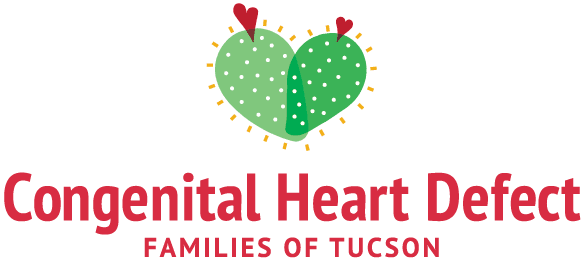Questions and Answers about Congenital Heart Disease and Cold and Flu Season

Cold and flu season means runny noses, sore throats, coughing, and achy bodies. Cold and flu season means missed social engagements because we don’t feel well. Cold and flu season means the kids are too sick to go to school, and we must miss work to stay home with them. With congenital heart disease, the stakes are much higher. Instead of a day home from school, it can mean a trip to the emergency room. Instead of a visit to the pediatrician, it can mean a visit to the intensive care unit. Our children with significant congenital heart disease have lower energy reserves. It is easy for a healthy person to compensate for and fight the common cold or even the flu. However, in a child with only one functioning ventricle with low oxygen saturations or a child with a large hole in the heart, a common cold can be overwhelming to the system. These individuals are functioning at a lower baseline level. Put another way, their heart and lungs may be operating at 70% capacity instead of 100%. The additional energy it takes to fight an infection stresses their system and can put them at risk for cardiovascular decompensation. Fortunately, the majority of patients that I care for with congenital heart disease are not at risk of decompensation from typical infections during cold and flu season. It is important to discuss your child’s functional status with your cardiologist so that you know how your child will respond to illnesses during the winter season.
What basic steps can help protect heart kids during cold and flu season?
Most cold and flu viruses are spread by direct contact. Hand washing remains the most important step in warding off common viruses. Infants and toddlers (and even older kids that should know better!) are going to put their hands in their mouths, our mouths and their friends’ mouths. We try hard, but we will never win this battle. We can, however, make sure that older kids and adults wash their hands before holding the infants. We can also make sure that we limit exposure of sick individuals to the younger kids with heart disease. I get a lot of questions about taking heart kids out in public during cold and flu season. Generally, going out is fine as long as the above common sense measures are kept in mind. Chances are you’re going to have to go to the grocery store sometimes with your heart kid during flu season.
Although direct contact spreads most germs, there is growing evidence that dry air and low relative humidity is linked to higher infection rates. Tucson could certainly serve as a lab for this research. Humidifiers may help bring down infection rates and keep us healthier. CHD Families of Tucson is ahead of the curve and getting behind this research. See this link for more information: https://www.forbes.com/sites/leahbinder/ 2019/10/17/harvard-researcher-says-this-inexpensive-action-will-lower-hospital- infection-rates-and-protect-us-for-the-flu-season?sfns=mo#1f171e471824
What about flu shots?
The CDC recommends that everyone over 6 months of age receive an annual flu shot, with rare exception. The rare exception is primarily directed at individuals with severe allergies to the flu vaccine or allergies to the ingredients in the vaccine.
What is RSV and should my child receive prophylaxis against RSV?
Respiratory syncytial virus (RSV) is a virus that causes a significant amount of illness each cold and flu season. If an older child or adult is infected with RSV, it typically causes an upper respiratory illness or cold. However, in younger children and infants the virus can cause a lower respiratory illness such as pneumonia or bronchiolitis. Bronchiolitis is inflammation of the bronchioles which are the smallest tubes in our lungs leading to the air sacs in our lungs that exchange oxygen and carbon dioxide. Children younger than 2 years of age with hemodynamically significant congenital heart disease have up to a five times greater rate of RSV-related hospitalizations vs. healthy full-term infants. Prophylaxis against RSV involves receiving a monthly injection of Synagis (palivizumab) during the winter and early spring months. Synagis is not an immunization but rather an antibody that helps the body fight off RSV, if a child is infected with RSV. Currently, the American Academy of Pediatrics recommends Synagis for patients with “hemodynamically significant” congenital heart disease who are younger than 12 months of age during cold and flu season. Synagis is also recommended to certain premature infants and infants with chronic lung disease. See this link for more information: RSV recommendations unchanged after review of new data …https://www.aappublications.org › news › 2017/10/19 › RSV101917
What is “hemodynamically significant” congenital heart disease?
This gets back to what I was referring to in the first paragraph. Hemodynamically significant refers to conditions where the heart is working harder than it needs to. These children have decreased energy reserves. An illness that would likely be fought off easily by a healthy child could have devastating effects on a child with congenital heart disease. An example of a hemodynamically significant defect would be an infant with a large ventricular septal defect on medication to control heart failure symptoms. There are many other potential examples. Your cardiologist can help you and your pediatrician figure out if your child would benefit from RSV prophylaxis.
Final thoughts
Although cold and flu season is underway in Tucson, it is not too late to discuss the topic with your pediatrician or cardiologist. Having a good understanding of your child’s functional status and what degree of illness they will tolerate is important. This is something you can discuss with your doctors year-round. Stay well this winter!
Brian Blair, MD Pediatric Cardiologist






